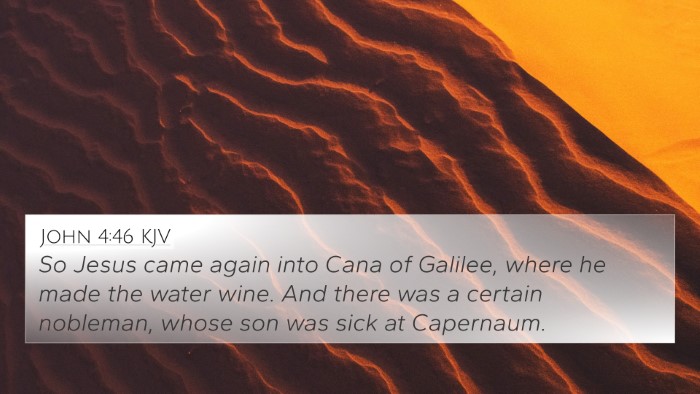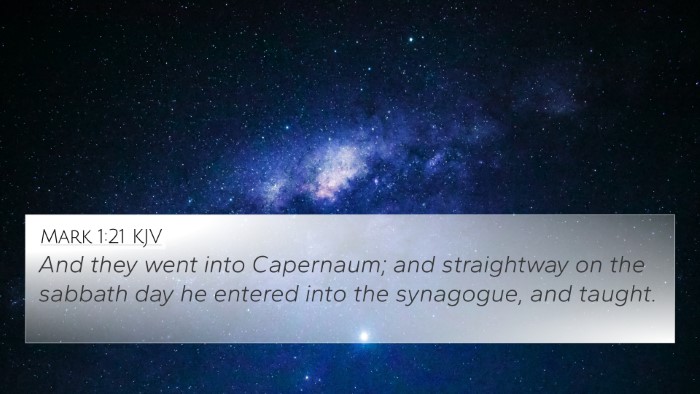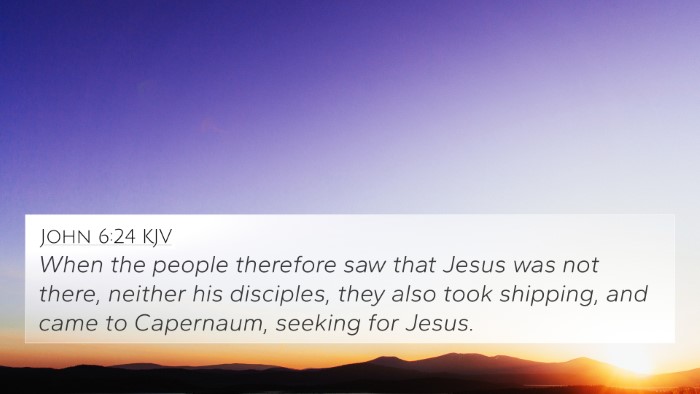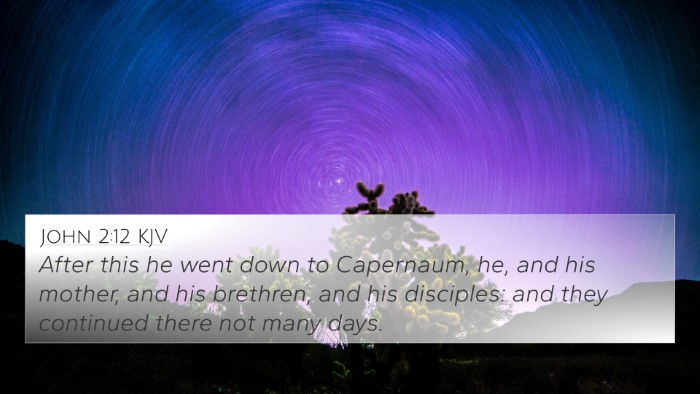Understanding Matthew 4:13
Matthew 4:13 states, "And leaving Nazareth, he came and dwelt in Capernaum, which is upon the sea coast, in the borders of Zebulun and Naphtali:" This verse marks a significant transition in the ministry of Jesus, indicating a move from his hometown of Nazareth to Capernaum, where he would begin his public ministry.
Contextual Background
Understanding this verse requires considering the historical and geographic context. Capernaum, located on the northwestern shore of the Sea of Galilee, was a bustling fishing village and thus a strategic location for Jesus’ ministry. Matthew Henry notes that this move fulfilled prophetic declarations regarding the Messiah and also served to provide a more suitable setting for his teachings.
Prophetic Fulfillment
Jesus's movement to Capernaum reflects the fulfillment of prophecies from Isaiah concerning the lands of Zebulun and Naphtali, as pointed out by Albert Barnes. This indicates the broader plan of salvation extending geographically, which Adam Clarke elaborates by discussing the implications of Jesus’s choice in location as a means to reach more people.
Thematic Connections
This verse links thematically to several other scripture references that illustrate the ministry of Jesus and his intent to reach the marginalized and those in darkness. The following are notable biblical cross-references associated with this verse:
- Isaiah 9:1-2: Prophecy about the land of Zebulun and Naphtali seeing a great light.
- Matthew 4:12: Jesus’ departure from John the Baptist after his imprisonment.
- Luke 4:31-32: Describes Jesus teaching in Capernaum and the reception he received.
- John 1:43-46: The call of Philip from Bethsaida, near Capernaum, reflecting the connections within Galilee.
- Matthew 8:5: The healing of the centurion's servant in Capernaum, demonstrating Jesus’s authority and compassion.
- Mark 1:21-22: Accounts of Jesus teaching in the synagogue of Capernaum, showing its importance as a teaching center.
- Matthew 9:1: Jesus returning to Capernaum to heal the paralytic, emphasizing why he centered his ministry there.
- Luke 7:1: The miracles performed by Jesus in and around Capernaum underlining its significance.
- Matthew 15:29: The context of Jesus’ ministry in Galilee and his miraculous works enhancing the understanding of his Capernaum activity.
- John 6:1: Reference to Jesus crossing the Sea of Galilee, a reminder of the area’s importance in his ministry.
Inter-Biblical Dialogue
The journey from Nazareth to Capernaum can be seen as part of an inter-biblical dialogue where the teachings and actions of Jesus in the New Testament continually refer back to the Old Testament prophecies, showing the continuity of God's plan through history.
Application in Bible Study
For those engaging in Bible study, this verse can signify the importance of place, purpose, and prophetic fulfillment. Tools for Bible cross-referencing such as a Bible concordance can facilitate deeper insights into the connections between scriptures related to this passage. Understanding the geographical and cultural background can enrich the interpretation of Jesus’s mission and teachings. Cross-reference Bible study methods can be employed to explore these themes in greater detail.
Conclusion
In summary, Matthew 4:13 serves as a pivotal moment in the Gospel narrative, where Jesus begins his ministry in Capernaum. Through this verse and its connections to other scriptures, believers can appreciate the layered meaning of Jesus’s life and mission, while understanding how cross-referencing Bible texts illuminates the coherence within the biblical narrative.














